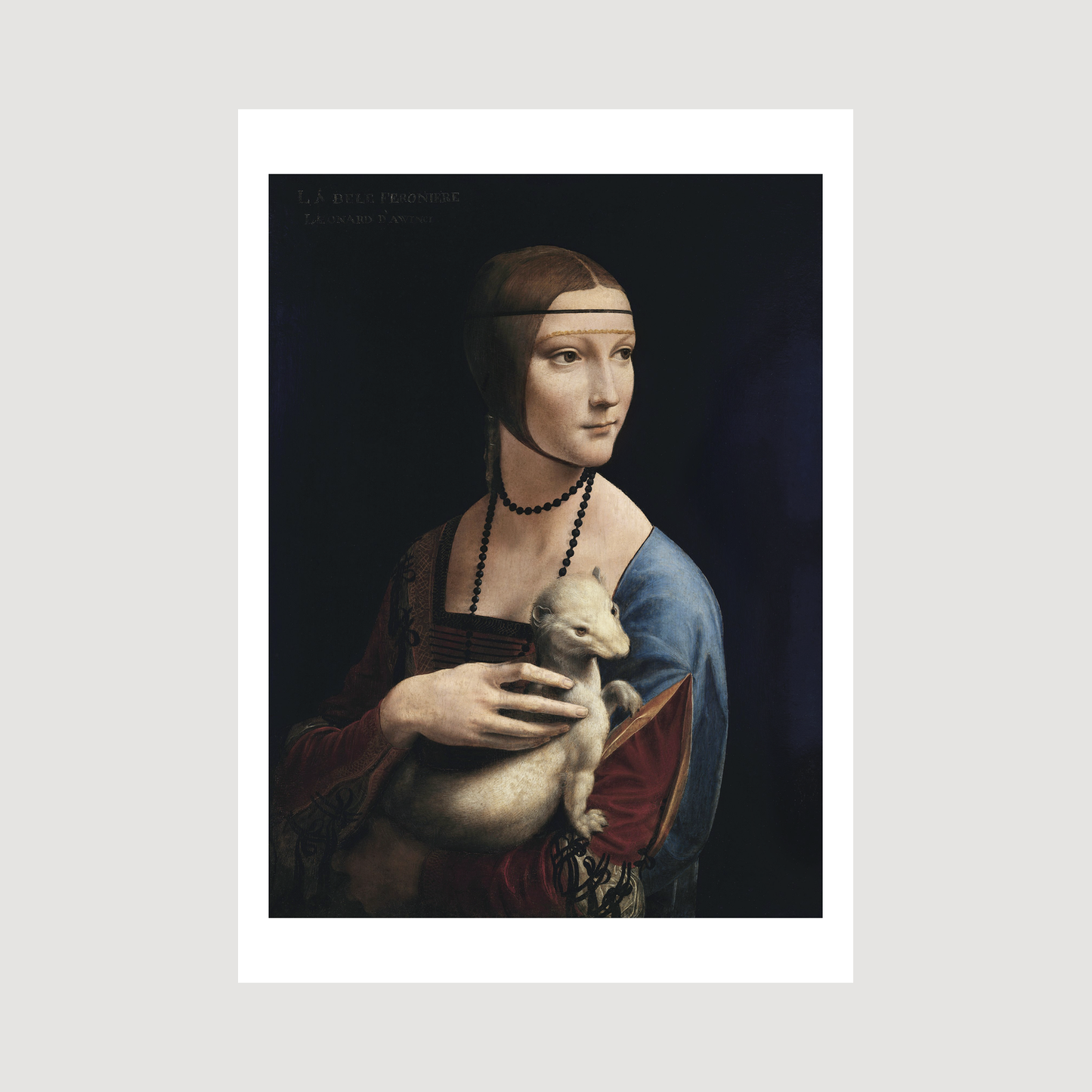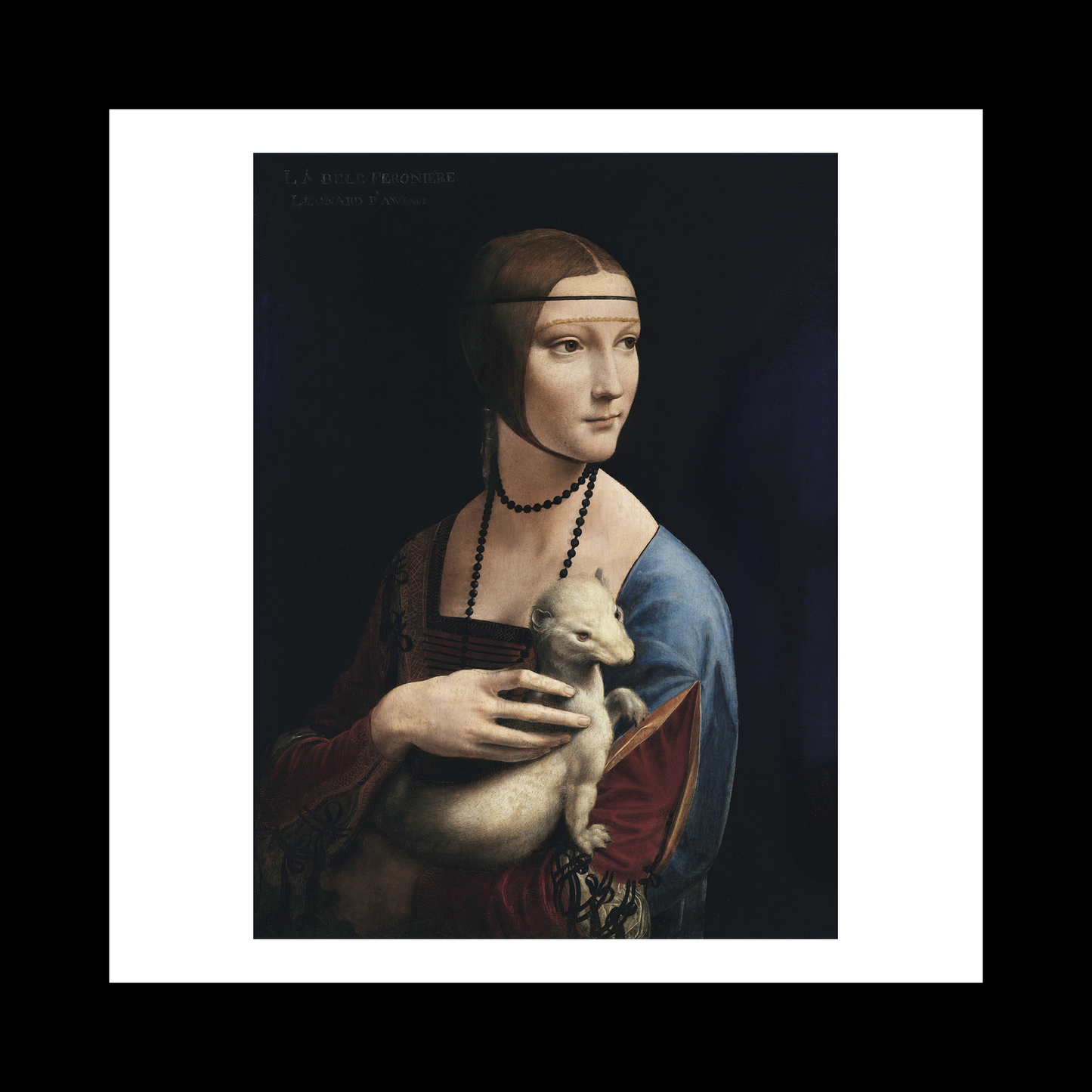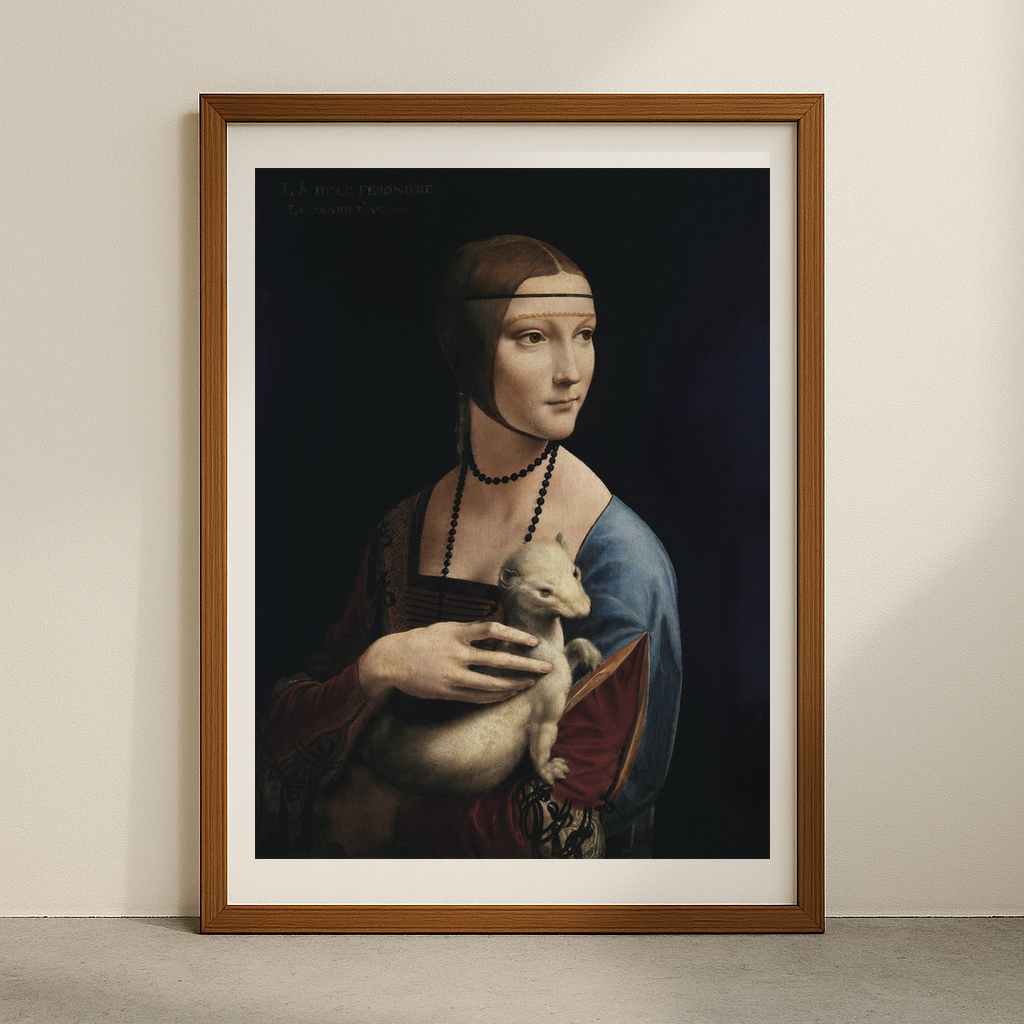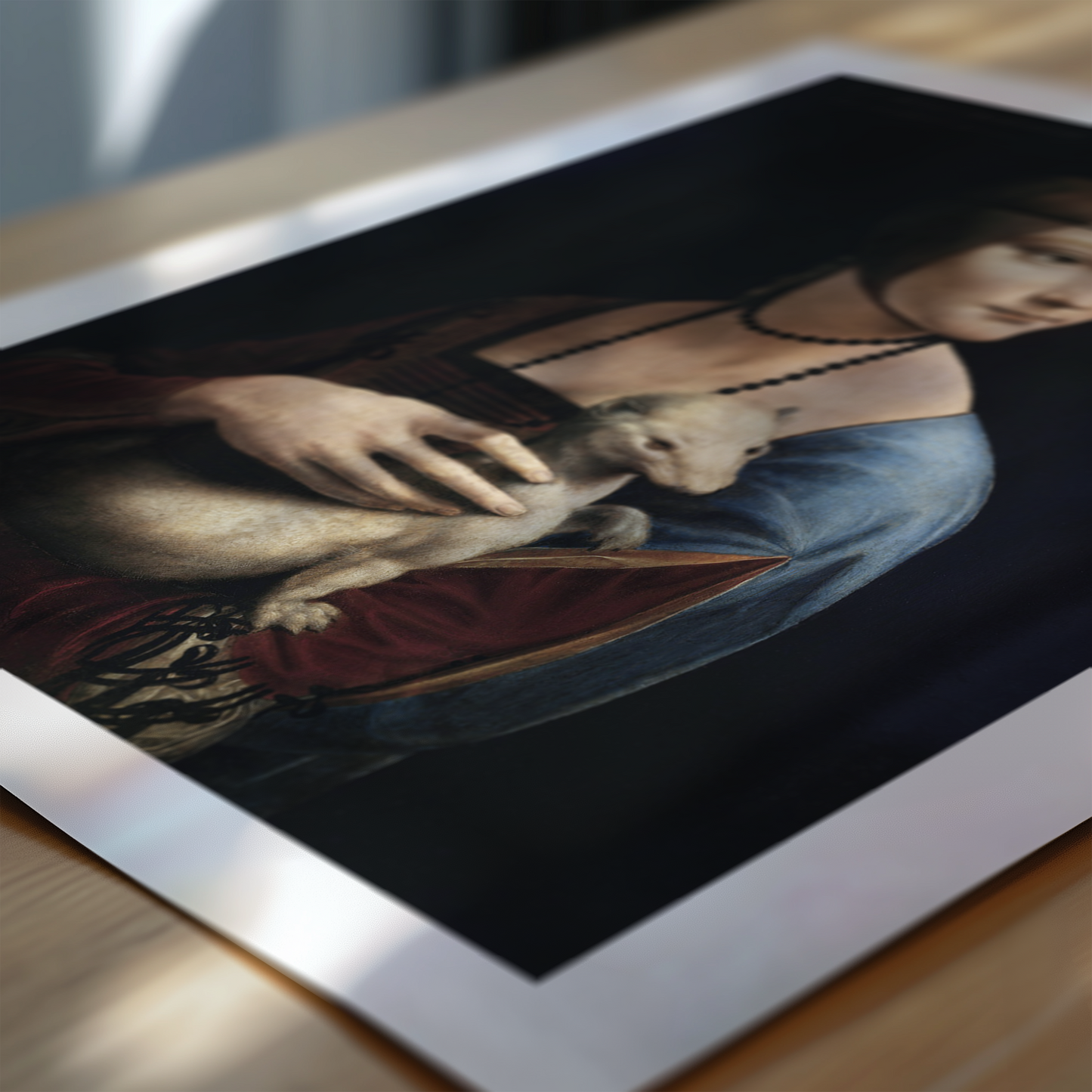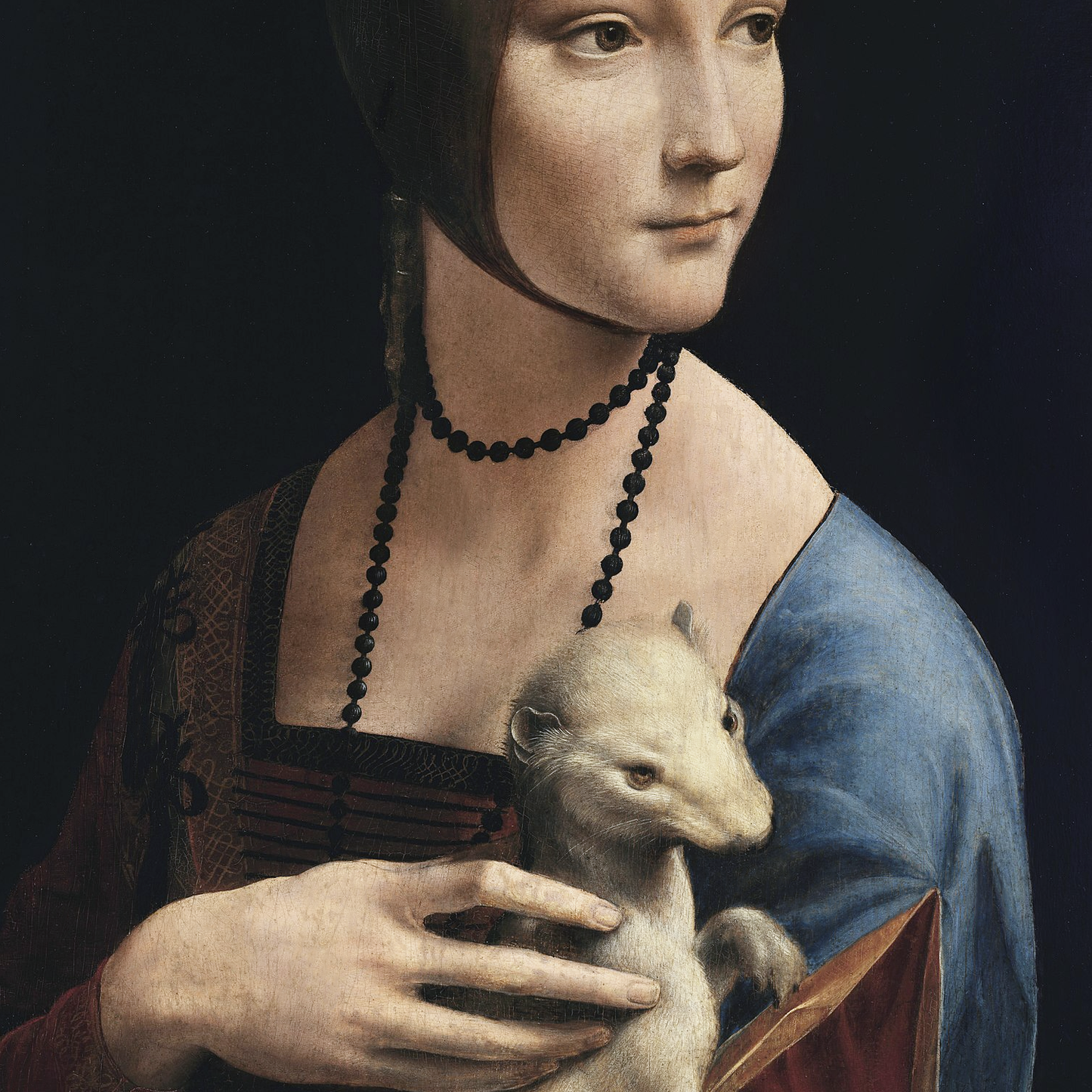1
/
of
6
Lady with an Ermine (1490)
Lady with an Ermine (1490)
Regular price
£12.45 GBP
Regular price
Sale price
£12.45 GBP
Taxes included.
Quantity
Couldn't load pickup availability
Lady with an Ermine stands as one of Leonardo da Vinci's most compelling portraits, depicting Cecilia Gallerani, the young mistress of Milan's Duke Ludovico Sforza. The painting showcases da Vinci's extraordinary ability to capture both physical likeness and inner character, with the subject's youthful beauty enhanced by her elegant pose and penetrating gaze. The ermine she cradles, symbolising purity and moderation, adds layers of meaning to the composition, while also serving as a clever reference to her lover, the Duke, who held the Order of the Ermine.
The technical brilliance of the work lies in da Vinci's masterful use of sfumato, his signature technique of subtle gradations between light and shadow, creating an almost ethereal quality in Cecilia's skin tones. The artist's meticulous attention to detail is evident in every element, from the intricate rendering of the ermine's fur to the delicate fall of light across Cecilia's face. The dark background, unusual for its time, makes the figure appear to emerge from the shadows, lending the portrait a striking modernity.
Created during Milan's Renaissance golden age, this portrait reflects the period's fascinating intersection of art, politics, and personal relationships. Da Vinci painted it while serving as court artist to Duke Sforza, and the work exemplifies how Renaissance portraits often carried multiple layers of meaning - personal, political, and allegorical. The painting's exceptional state of preservation allows modern viewers to appreciate da Vinci's revolutionary approach to portraiture, where psychological insight meets technical virtuosity in perfect harmony.
View full details
The technical brilliance of the work lies in da Vinci's masterful use of sfumato, his signature technique of subtle gradations between light and shadow, creating an almost ethereal quality in Cecilia's skin tones. The artist's meticulous attention to detail is evident in every element, from the intricate rendering of the ermine's fur to the delicate fall of light across Cecilia's face. The dark background, unusual for its time, makes the figure appear to emerge from the shadows, lending the portrait a striking modernity.
Created during Milan's Renaissance golden age, this portrait reflects the period's fascinating intersection of art, politics, and personal relationships. Da Vinci painted it while serving as court artist to Duke Sforza, and the work exemplifies how Renaissance portraits often carried multiple layers of meaning - personal, political, and allegorical. The painting's exceptional state of preservation allows modern viewers to appreciate da Vinci's revolutionary approach to portraiture, where psychological insight meets technical virtuosity in perfect harmony.

